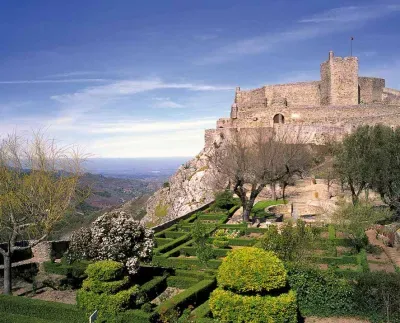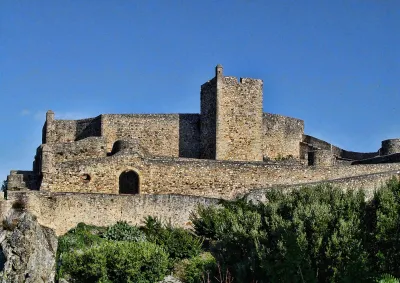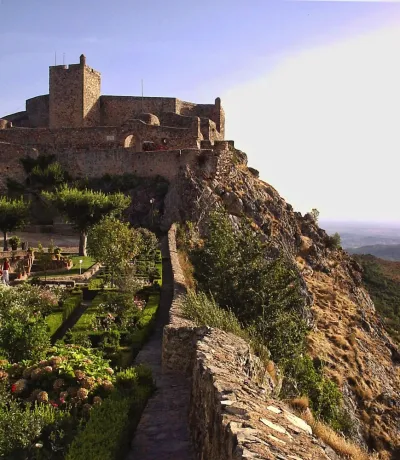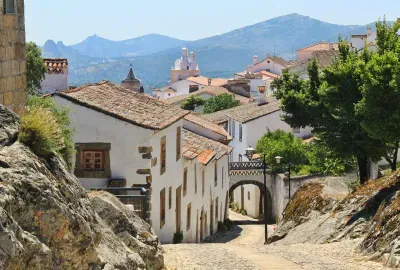

Marvão Castle view CanStockPhoto/LianeM
Marvão Castle walls 
Marvão Castle and gardens The whitewashed village of Marvão clings to the sides of a craggy granite peak of the Serra de São Mamede in the northern Alentejo. Crowning the 960 metre (3,000 ft) peak is the largely 13th century castle of Marvão.
It is fairly obvious why this position was chosen; the stunning sweeping views take in the mountainous terrain up to and beyond the Spanish border less than 15km (10 miles) away. In the words of Nobel laureate José Saramago, "From Marvão one can see the entire land", and this is not too much of an exaggeration. The first castle to be built in Marvão was by its founder, the 8th century Islamic knight, Ibn Marwan. He used the hilltop fort as a stronghold to survey all his conquered lands.
Islamic rule held strong for nearly 5 centuries until Marvão was reconquered in the 1160s by King Afonso I. Just over a hundred years later, during the reign of King Dom Dinis, the current Castelo de Marvão was built. This was at a time when the Moors were finally being pushed back and the border with Spain needed to be secured. Marvão Castle itself is a fine example of a crusader-era medieval castle.
Its austere thick granite walls enclose part of the village and the tall central keep. There are many innovative features to aid the defence of the castle such as; arrow-slits to reign arrows on any attackers, bent entrances to slow down the progress if the gates were breached and a series of "killing zones" such as the triple gate where death could be rained down on any invaders. The castle also has an large and eerie cistern chamber that could collect rainwater during times of siege. It is said that if you speak your wishes into the echoing chamber they may come to pass.
Possibly the best reason to visit Marvão Castle is the atmosphere and sense of history which this place has in buckets. It is worth sticking around for sunset and enjoying the vista, and silence after the crowds of day-trippers have returned to Lisbon.
MarvãoAttraction type

Marvão travel guide »
The charming medieval village of Marvão stands out among the other settlements in this area of the Alentejo. It is one of only a handful of remaining towns nestling entirely within its ancient defensive walls. The village is commandingly perched atop a 862 metre (2,800ft) high quartzite looking out over the plains of the Serra de São Mamede and to the Spanish border only a few kilometres away…